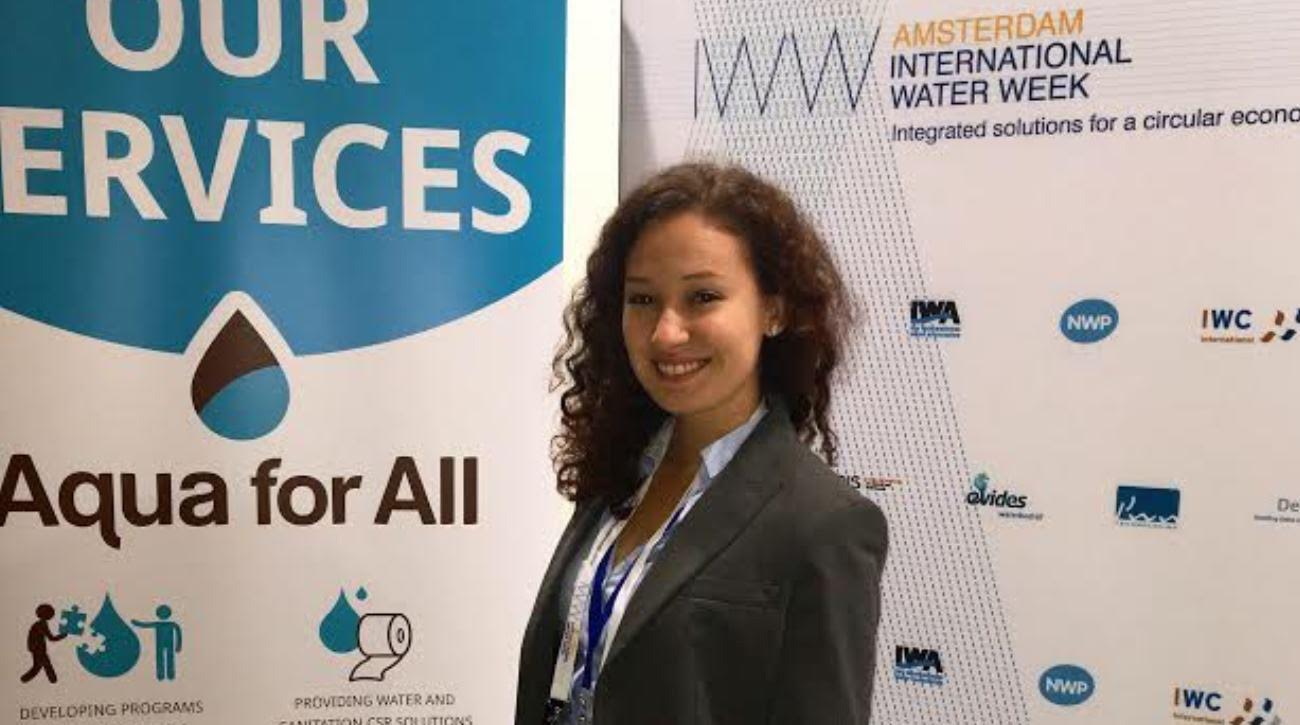Last summer, Global Environmental Health MPH Student Amanda Quintana heard about an unpaid opportunity to serve as an “e-intern” with the U.S. Agency for International Development's (USAID) Securing Water for Food Grand Challenge. The project involved Quintana’s main public health research passions: food security and water, sanitation, and hygiene (WASH).
Quintana’s internship involved reading and evaluating information about grant applications to help determine who would receive project funding, which awards innovators who devise ways to produce larger amounts of food using little water. She helped assess more than 40 concepts submitted by applicants from all over the world. She was trained in how to rank the applicants’ written concept descriptions and was required to justify each ranking. She said that she was able to apply knowledge gleaned from her Environmental and Occupational Health (EOH) classes, including Global Health Qualitative Research Methods and Global Environmental Health, to fulfill her volunteer role.
Quintana was also aided by what she learned in her practicum experience with Partners of the Americas’ Agriculture and Food Security Unit. Her work there focused on monitoring and evaluating USAID’s Farmer to Farmer program, which provides technical assistance aimed at increasing sustainability to farmers and other agriculturally focused groups in developing and transitional countries.
The USAID e-internship "was a lot of work, but it was awesome to learn about all of the innovations,” she says. Later on in the process, Quintana helped with evaluating the semi-finalists by taking very detailed notes during “Google Hangout” teleconferences.
“We played an integral role in the process,” Quintana says. She was one of the top five interns chosen toward the end of the period when the interviews were being conducted to travel to Amsterdam to attend the Securing Water for Food workshop. The workshop's attendees included all of the innovators whose projects and innovations were selected for funding.
While at the conference, Quintana helped out with administrative tasks including more note-taking. “It was my first opportunity to meet the people who I’d been working with all summer,” she says. It was also her first trip to Amsterdam. In addition to meeting the innovators, she had the opportunity to watch them work with investors and improve their business models at during the workshops.
The 25 groups of innovators at the conference included an aquaponics project simultaneously raising fish and plants so that the fish waste feeds the plants and the plants filter the water for the fish. Another funded project in Bangladesh involved low-income women harvesting pumpkins in an area of land on the coast made very sandy by cyclone. A third project from South Africa used biodegradable “seed tape” designed to help ensure that scarce water supplies are used only in places where seeds are planted.
Quintana participated in the third “round” of tapping new innovators, and those who received funding will be invited back to attend future rounds, as did many past recipients of funding.
Quintana was also able to attend the Amsterdam International Water Week conference, which drew 25,000 water professionals to the city, during her visit. She said that she made connections from both events that are helping her with prospective job opportunities.
She promises to alert students to opportunities to participate in the process in future years. “Participating in the program was an extremely beneficial experience,” she said.


